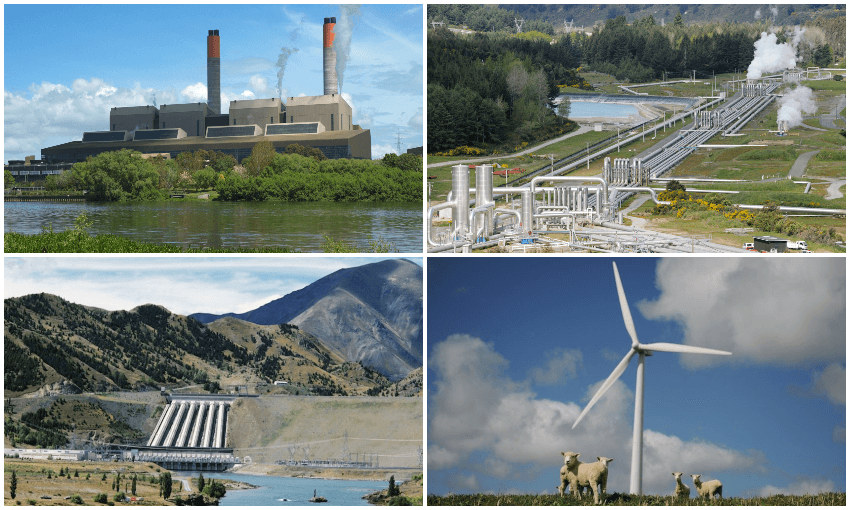OPINION: In the fifth part of the series with our partners at Flick Electric Co to help you make better energy choices, Flick’s Nikki Cockburn breaks down the sources of our electricity.
So we know that regardless of which power company we’re with, the electricity we use is at the mercy of the National Grid. But what factors influence the actual generation sources that feed this monster?
We have over 200 power stations in New Zealand from a range of different sources, but the key difference is that some are fuelled by renewables while others are powered by fossil fuels. Gentailers Meridian, Mercury, Contact, Genesis and Trustpower own 98 power stations between them and operate another 81 on behalf of others as well. So, let’s check out the different types of power station:
The renewables
On the global stage, New Zealand does a good job in producing renewable energy with our resources like water and wind, providing over 84% of our energy in 2018 according to MBIE (that’s compared with the OECD average which sits at 25%).
Hydroelectricity uses the force of falling water to spin the blades of a large turbine, which is connected to a generator. We have over 60 hydropower stations, the majority found in the South Island, providing around 55% to 60% of our power with no greenhouse gas emissions. So the more water we have stored in our hydro lakes and the more secure our supply of hydro generation, the better it is for our carbon emission levels.
Wind energy is generated from the spinning blades of wind turbines. Wind farms generate around 5% of our electricity, but with 17 wind farms in operation right now, we could see this percentage rise in the coming years. Most of our wind farms are based in the North Island, and they too produce no greenhouse gas emissions.
Geothermal plants in the Taupo Volcanic Zone and Ngawha in Northland provide over 17% of our power, by piping high-pressure water and steam from wells under the ground to a generation plant. The energy from the steam spins a turbine, generating electricity. Geothermal generation produces some greenhouse gas emissions.
The dirtier stuff
Here in New Zealand, electricity generation is responsible for approximately 4.4% of our total greenhouse gas emissions. So what forms of generation are the dirtiest?
Co-generation is the process of converting excess energy from industrial sites into steam, and then electricity. The electricity is usually used again on-site, and anything extra can be fed into the National Grid. Co-gen occurs mainly in the upper North Island and it produces moderately high greenhouse gas emissions.
Coal and gas, also known as fossil fuels, are non-renewable and come from plant and animal matter that’s millions of years old. When they’re burnt their heat is converted to steam, and the pressure of the steam is used to drive a steam turbine (known as thermal generation). Coal-fired plants provide around 4% of NZ’s electricity, while gas provides around 15%.
Diesel generation sits at the far end of the spectrum and is thankfully only used very occasionally as a form of backup generation. Needless to say, it’s dirty too.
When do they each get switched on?
That comes down to supply and demand. When our supply of clean and green generation keeps up with demand for electricity across Aotearoa, carbon emissions are low – wahoo!
Things aren’t quite so peachy when demand for power exceeds the available supply of renewables. Dirtier generation sources are fired up, producing lots of carbon emissions, and they also just happen to be more expensive to run.
So, what are the trends?
Demand for electricity has both daily and seasonal trends. You might know that the mad rush hours of breakfast and dinner are known as ‘peak’ times when demand for electricity is high. It’s often during the peak hours that our infrastructure is stretched, and back-up generation is fired up to meet demand.
Likewise, the demand for electricity increases over the colder, darker months. However, winter tends to bring with it wind and rain, which usually means there’s an increase in cheaper, renewable energy (there’s always a silver lining). A high and steady supply of renewables generally does a lot to meet the increased demand for power over winter.
So what can I do?
This is the easy part – it’s all about off-peak power! By shifting the times that you use appliances like your washing machine, dryer, or heat pump to off-peak hours, you’re making the most of that nice, clean generation. Avoiding those peak times when demand is high (usually first thing in the morning, and again in the early evening) means that you’re already on your way to reducing your household’s carbon emissions.
This content was created in paid partnership with Flick. Learn more about our partnerships here.

